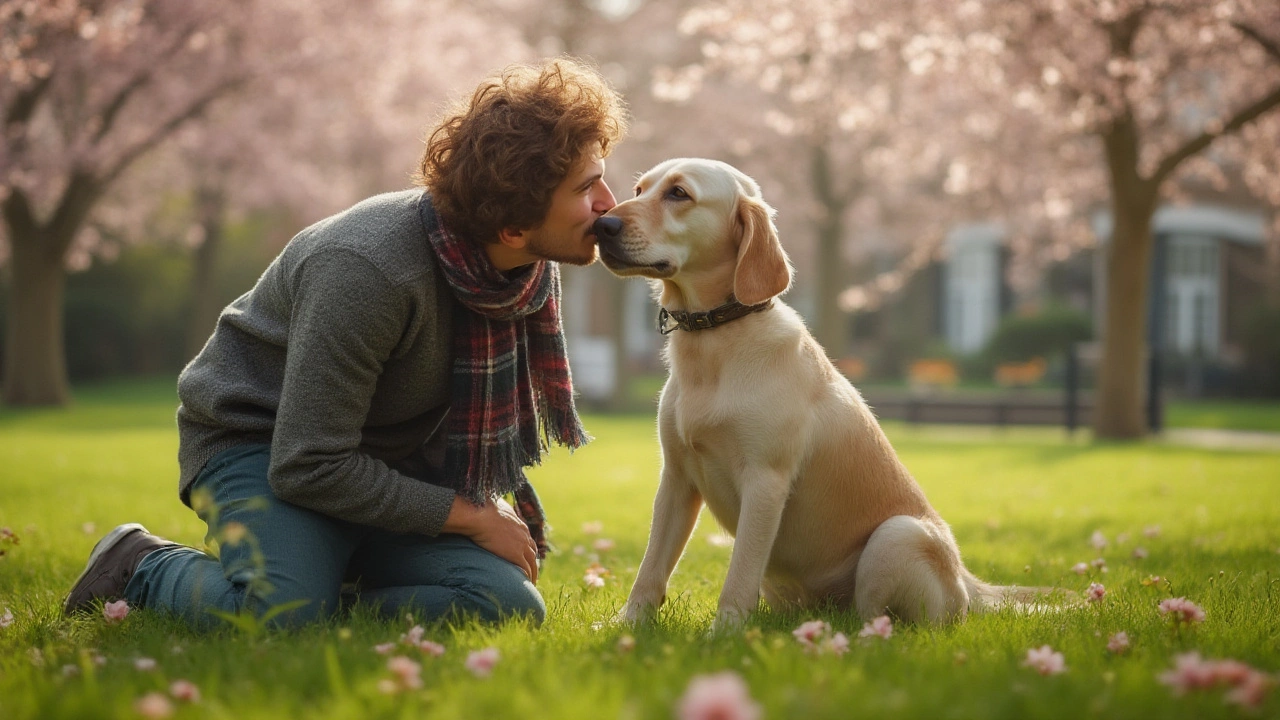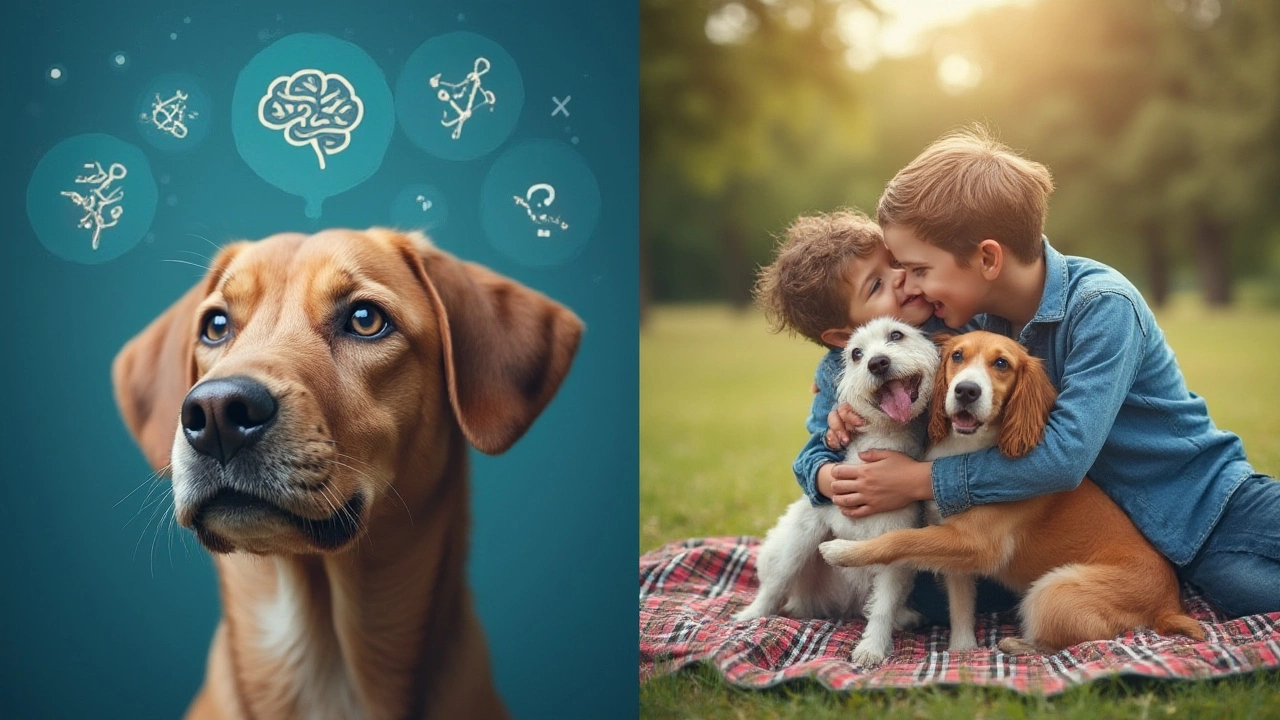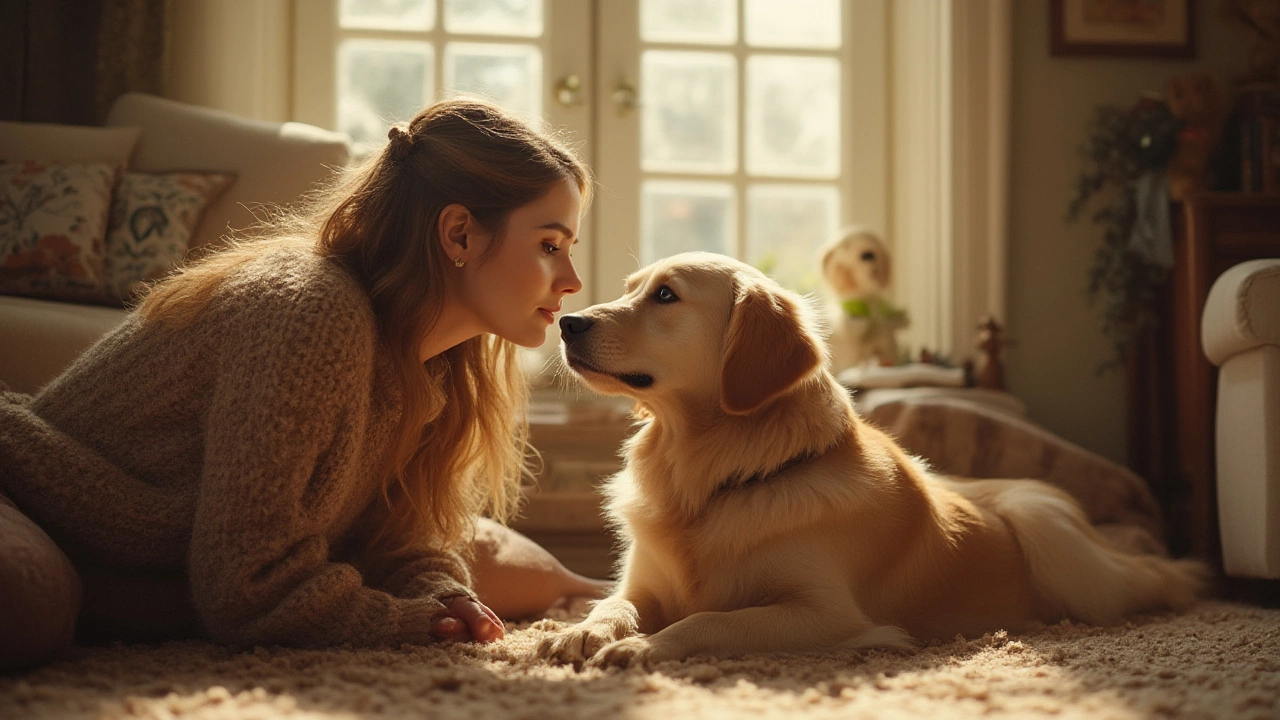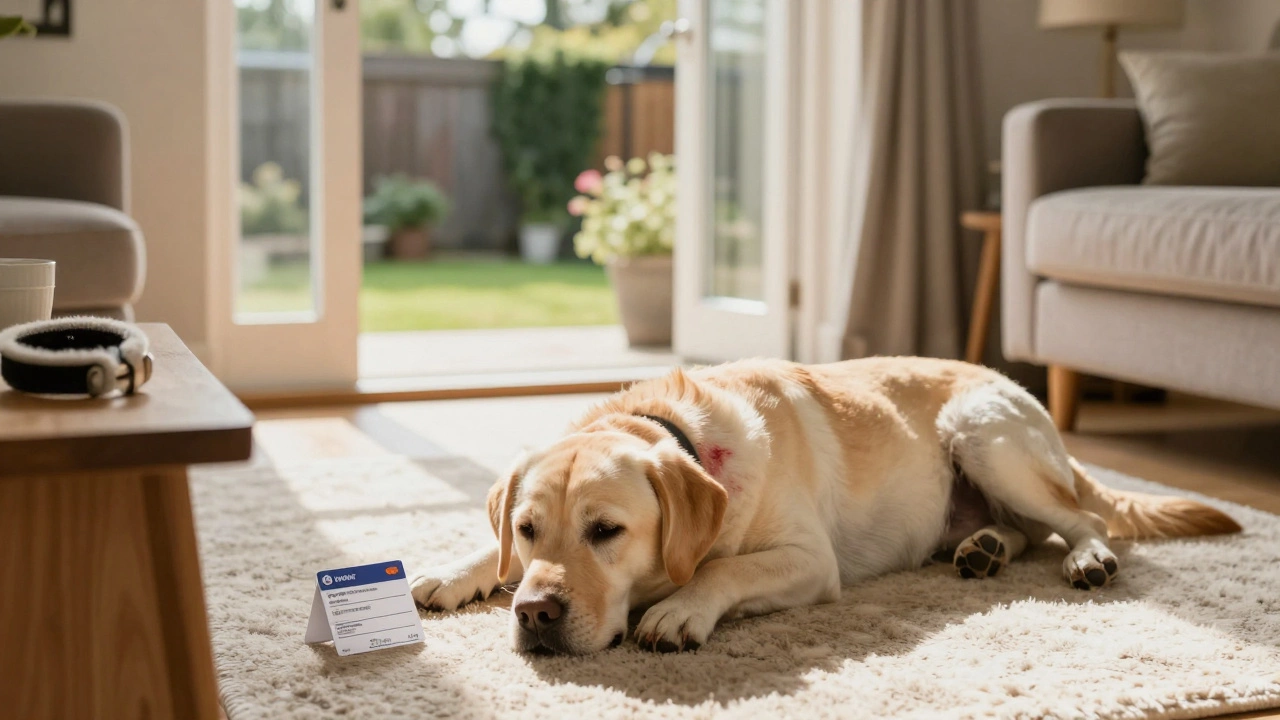Have you ever looked into your dog's eyes right after giving him a kiss and wondered what's going on behind that adorable head tilt? You're not alone. So many of us share our affection with our dogs the human way: a smooch, a hug, sometimes a silly baby voice. But what's really going through your dog's mind when you land a big kiss on his head? Is he feeling love? Confusion? Maybe just thinking about his next meal? Let's get honest about what signs to look for, what the science says, and how our canine companions actually react when we pour on the kisses.
Do Dogs Understand Kisses as a Sign of Love?
Dogs, for all their loyalty and emotional intelligence, definitely didn’t evolve with the idea that a quick peck on the nose means “I love you.” Kissing is a pretty weird habit, as far as the animal world is concerned. Wild canines—wolves, coyotes—don't kiss. In fact, they’re more likely to sniff each other’s butts than to nuzzle up for a Hollywood-style embrace. Humans, with all our face-to-face communication, are the odd species out.
Still, dogs are brilliant at reading our body language. From the tilt of your head to the way you crouch and coo, your dog is processing a ton of clues. A study out of Japan’s Azabu University in 2015 found that when dogs gaze into their owners’ eyes, their oxytocin levels spike—just like a mother’s does looking at her baby. That oxytocin rush? It's proof your affection is definitely being noticed, even if the gesture is foreign.
My wife, Selena, thinks our rescue dog Scout “knows” kisses mean love. I’ll admit he looks ridiculously mellow when she showers him with kisses, but the key is her gentle tone, slow movements, and the fact she never forces it. The message? If you’ve built trust with your dog, your body language of love will probably make him feel relaxed and happy—kisses included.
But here’s a twist: for some pups, especially those who haven’t had a lifetime of snuggle sessions, kisses can feel threatening or just plain weird. Canine expert Dr. Stanley Coren writes that dogs unfamiliar with intimate facial gestures might interpret kisses as an invasion, leading to stress or avoidance. If your dog tenses up, licks his lips, or tries to duck away, he’s not loving the affection—he’s politely saying "no thanks, Dad."
So, to wrap it up: dogs don’t instinctively understand kisses as “love,” but through trust, routine, and positive vibes, they associate human smooches with affection over time.
What Does Science Say About Dog Reactions?
Science nerds, this is your section. Let's talk dopamine, oxytocin, and behavioral cues. The truth is, there’s a ton of research about the way dogs react to human touch and closeness, but very little that specifically studies “dog kissing.” That being said, touch-based affection has been under the microscope plenty.
Most famously, that 2015 Azabu University study—often dubbed the “puppy love” study—found that when owners stared lovingly at their dogs, oxytocin blood levels rose in both species. That’s the “love hormone,” known for fostering connection and trust. Other researchers at Emory University, using MRI scans, found that a dog’s brain lights up (literally) at the sound of her owner's voice compared to a stranger’s. These results show how tuned-in dogs are to human emotion, and just how much our words and actions impact their happiness.
What about the specifics of kisses? According to the American Kennel Club, while dogs don’t naturally kiss each other, many quickly learn that a gentle kiss = positive attention. Some dogs might even offer “kisses” back in the form of licking your face or leaning against you when you lean in for a hug.
Here’s a fun fact: a 2023 poll by VetStreet.com found that about 55% of American dog owners regularly kiss their dogs, while only 10% say their dogs "love it" every time. The rest? They range from super chill to "stop, get away from my face!" The real key is tuning in to your own dog's reactions.
Check out this simple table to break down some science-backed dog cues around affection:
| Dog Behavior | What It Likely Means |
|---|---|
| Soft, relaxed body, slow blink | Dog is comfortable, maybe loving the moment |
| Licking your face back | Trying to reciprocate affection, or just likes the salty taste |
| Tense, ears back, whites of eyes showing | Your dog is stressed, not a fan of the kisses |
| Yawning, licking lips | Subtle canine stress signals; take it as a "no, thanks." |
| Tail tucked, trying to move away | Definitely doesn't appreciate this kind of attention |
Make it your mission to spot these cues. It could be the difference between a dog that feels safe and snug, and one that secretly wishes you’d just toss a treat and skip the PDA.

Are Kisses Safe or Stressful for Your Dog?
Let’s get real: not all dogs want to be kissed, and forcing the issue might do more harm than good. Don't buy into those cutesy Instagram videos if your dog seems annoyed. Stress in dogs doesn't always look obvious. It might be a subtle lip lick, a quick shake, or just turning his head away.
A study in the journal “Applied Animal Behaviour Science” (2012) revealed that about 80% of dogs at a dog park exhibited at least one ‘calming signal’—like yawning or lip licking—when a human bent in for a face-to-face hello. That suggests a lot of dogs may feel a bit uncomfortable with our human habits, especially in public or noisy places.
So, should you stop kissing your dog? Not necessarily. If he's relaxed, leans in, or even snuggles closer when you kiss him, then your canine companion probably doesn’t mind at all. In my house, our two dogs are like night and day: Scout, the lifelong cuddler, craves affection; Pepper, the little worrier, prefers to sit beside us with plenty of space. We respect both, and that’s made the world of difference.
But here’s a tip—never kiss a strange dog, or one that’s signaling discomfort. The face is a sensitive zone for dogs and getting up close can spark defensive behavior or even a snap.
What about health? The CDC and the American Veterinary Medical Association both say it’s low risk, but not risk-free, to kiss your dog. Dogs' mouths and noses carry their own bacteria, and in rare cases, bacteria like Capnocytophaga or Pasteurella can be transmitted to people with weak immune systems. Wash hands after affectionate sessions and avoid mouth-to-snout smooching, especially if you or your dog aren't feeling well.
If you see signals your dog isn’t enjoying the moment, try expressing love another way: a gentle scratch, a treat, or a happy voice. These acts speak canine fluently.
How Can You Tell If Your Dog Likes Being Kissed?
Some people read their dog’s body language as if it’s written in English, while others miss the clues completely. You don’t need a PhD in dog behavior to spot the signs—just a bit of mindfulness and some practice.
The clearest indicators your dog is into your kisses? Look for:
- Relaxed, loose muscles and a happy "face"—no tense posture
- Gentle tail wagging or the whole-body wag (the classic “butt wiggle”)
- Nuzzling into you or pushing his head closer
- Licking you back, often around the mouth, chin, or nose
- Slow blinking, almost like he’s falling asleep (yep, that’s doggy affection!)
But don’t force it. Each dog comes with his own unique story. Rescue dogs with tough pasts, puppies still learning, or senior dogs who just want to nap—what feels loving to you might feel confusing, or even scary, to them.
Here’s a quick cheat sheet for reading your dog’s response to affection:
- dog kissing goes well if your dog approaches, offers cuddles, or happily licks you back
- If lip licking, yawning, looking away, or turning away happens—pause, give space, and pick a different way to show love
- Growling, snapping, or rigid body? Stop! Your dog is asking for space and safety
- Time can change how your dog feels—what stresses them today might be fun in a few months if you build up positive associations

Tips for Showing Your Dog Affection (The Dog-Approved Way)
Kissing isn’t for every dog, and that’s okay. There are so many ways to build your bond and prove you’re part of his pack. Here’s what works—with science and real dog lovers to back it up.
- Scratch, don’t smooch: Most dogs adore a good scratch behind the ears, chest, or at the base of the tail. These are prime “affection zones” and can be way more enjoyable than face-to-face attention.
- Lean in—literally: Some dogs do the “lean,” pressing their side or shoulder against your leg. Lean back gently and see if your dog stays close. That’s canine for “I trust you.”
- Take walks and play: Spending time together on a walk or tossing a ball rewards your dog’s need for movement and pack time. Surprising fact: a University of Bristol study (2017) ranked regular play as the number one factor for owner-dog happiness.
- Talk to your dog: Your tone of voice means more than your words. A gentle, sing-song tone is just as powerful to dogs as a physical display. Emory University MRI research backs this up.
- Give space when your dog asks for it: Real love means respecting boundaries. If your dog’s done with affection, honor that and let him recharge. He’ll come back on his terms.
Want to amp up your connection? Try dog massage, clicker training, or a special adventure together. It’s about shared moments, not just traditional signs of affection.



